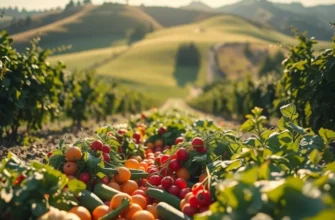Dehydrating foods is a fantastic way to preserve flavors, nutrients, and enhance your culinary repertoire. Whether you want to store seasonal fruits, create savory vegetable snacks, or experiment with herbs, the dehydrating process is accessible for home cooks of any skill level. With a few simple techniques and tips, you can turn your favorite ingredients into delicious, long-lasting treats that are perfect for snacking or cooking.
The Essential Tools and Ingredients for Dehydrating

Embarking on your journey of food dehydration begins with assembling the right tools and picking the freshest ingredients. The essential equipment you will rely on includes a dehydrator, an oven, or an air fryer. While each appliance serves the same purpose, a dehydrator may offer more precision and efficiency compared to ovens and air fryers. Dehydrators often come with temperature controls and timers, allowing you to achieve consistent results without constant supervision.
If a dehydrator is unavailable, an oven is a viable alternative, albeit with some adjustments. Set your oven to the lowest temperature and keep the door slightly ajar to allow moisture to escape. Air fryers can also function as dehydrators in small batches, making them suitable for beginners trying out the process.
Selecting quality ingredients is crucial for successful dehydration. Fresh fruits, vegetables, and herbs offer the best flavors and nutritional value. When choosing produce, opt for those that are ripe and free of blemishes. Overripe fruits, for instance, may be too moist, while underripe ones might lack flavor. Summer fruits such as apples, berries, and peaches, as well as vegetables like bell peppers and zucchini, are popular choices.
Begin by thoroughly washing your chosen produce to remove any residues. A good wash is essential to ensure the end product is not only tasty but safe to consume. After washing, slice the fruits and vegetables evenly to promote uniform drying. Thin slices typically dehydrate more consistently than thick ones, reducing the risk of uneven drying or molding during storage.
Blanching is optional but beneficial for some vegetables. This process involves boiling the vegetables for a brief period and then plunging them into ice water. Blanching helps preserve color, flavor, and nutritional value, leading to more vibrant dried products. However, it’s not necessary for fruits or herbs.
Herbs and greens are delicate choices that require a gentle approach. After washing, pat them dry gently with a towel or allow them to air dry. These delicate ingredients benefit from lower temperatures and close monitoring during the dehydration process.
If you are looking for ways to integrate dehydration into a broader meal planning strategy, consider resourceful approaches such as practical ingredient batching, which can enhance efficiency in your kitchen. Combining different preservation techniques not only saves time but also reduces waste, aligning with sustainable cooking practices.
By investing time in understanding the required tools and careful selection of ingredients, you can enhance the flavorful preservation of foods. Paying attention to detail at this preparatory stage ensures a smoother process and delightful results in your culinary explorations.
Step-by-Step Guide to Dehydrating Foods at Home

Embarking on the journey of dehydrating foods at home is both exciting and rewarding. Armed with the right tools, you’re ready to transform your fresh ingredients into versatile, shelf-stable treasures. Let’s explore the step-by-step process tailored to different food types.
Dehydrating Fruits
Fruits are a delightful place to begin. Start by washing and peeling them, if necessary. Slice fruits evenly, aiming for about 1/4 inch thick slices to ensure consistent drying. Arrange them in a single layer on the dehydrator trays, ensuring pieces don’t overlap.
Set your dehydrator to 135°F (57°C) for optimal dehydration. Times can vary, but a general guideline is 8-16 hours. Test fruit for doneness by removing a piece and letting it cool. It should be leathery and pliable, without moisture beads.
Dehydrating Vegetables
Vegetables require a bit of prep work. Blanch them briefly in boiling water to preserve color and nutrients. Drain and shock in ice water. Cut them into uniform pieces and place them on dehydrator trays.
The ideal temperature for vegetables is 125°F (52°C), with dehydration taking anywhere from 6-12 hours. Properly dried vegetables should be brittle or crisp.
Dehydrating Herbs
Herbs, with their delicate nature, need a gentler approach. Rinse them under cold water and pat dry. Arrange leaves in a single layer on trays. Avoid crushing them.
Set the temperature to 95°F (35°C) and dry for 1-4 hours. Herbs are done when they crumble easily between your fingers.
Ensuring Doneness and Proper Storage
To test for doneness across all food types, allow samples to cool before evaluating their texture.
Once dried, store your goods in airtight containers or vacuum-sealed bags. Keep them in a cool, dark place to preserve their flavors for months. For more on storage innovations, check eco-smart kitchen storage.
Creative Uses for Dehydrated Foods
Elevate your cooking with imaginative uses of dehydrated foods. Blend dried fruit into smoothies, bake them into muffins, or snack on them as is. Use dried vegetables in soups or stews, allowing them to rehydrate as they simmer. Herb blends can enhance any dish, adding bursts of flavor.
By following these steps, you can master home dehydration and infuse your pantry with vibrant, homemade ingredients ready to enhance any meal.
Final words
Dehydrating foods is not just a preservation method; it’s a fun culinary adventure that opens the door to healthful snacking and innovative meals. With the right tools and techniques, even novice cooks can successfully create their own dried snacks at home. Remember to experiment and enjoy the process; your taste buds will thank you! By introducing dehydrated ingredients into your cooking repertoire, you’re not only extending the life of your food but also enriching your dietary options. So, gather your supplies, pick your favorite fruits and vegetables, and start dehydrating today!







